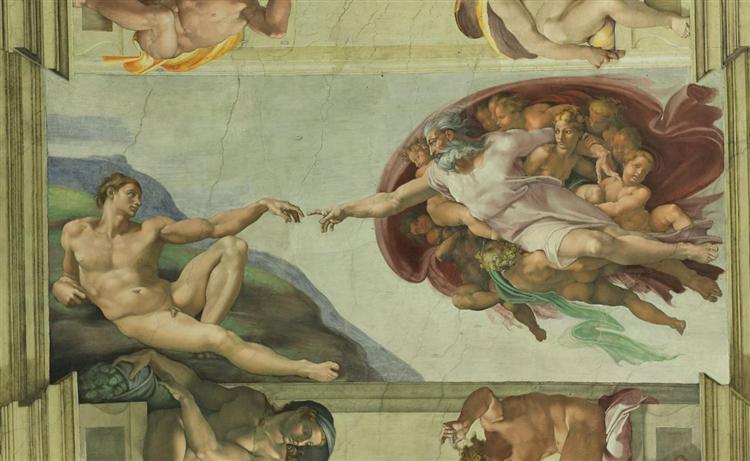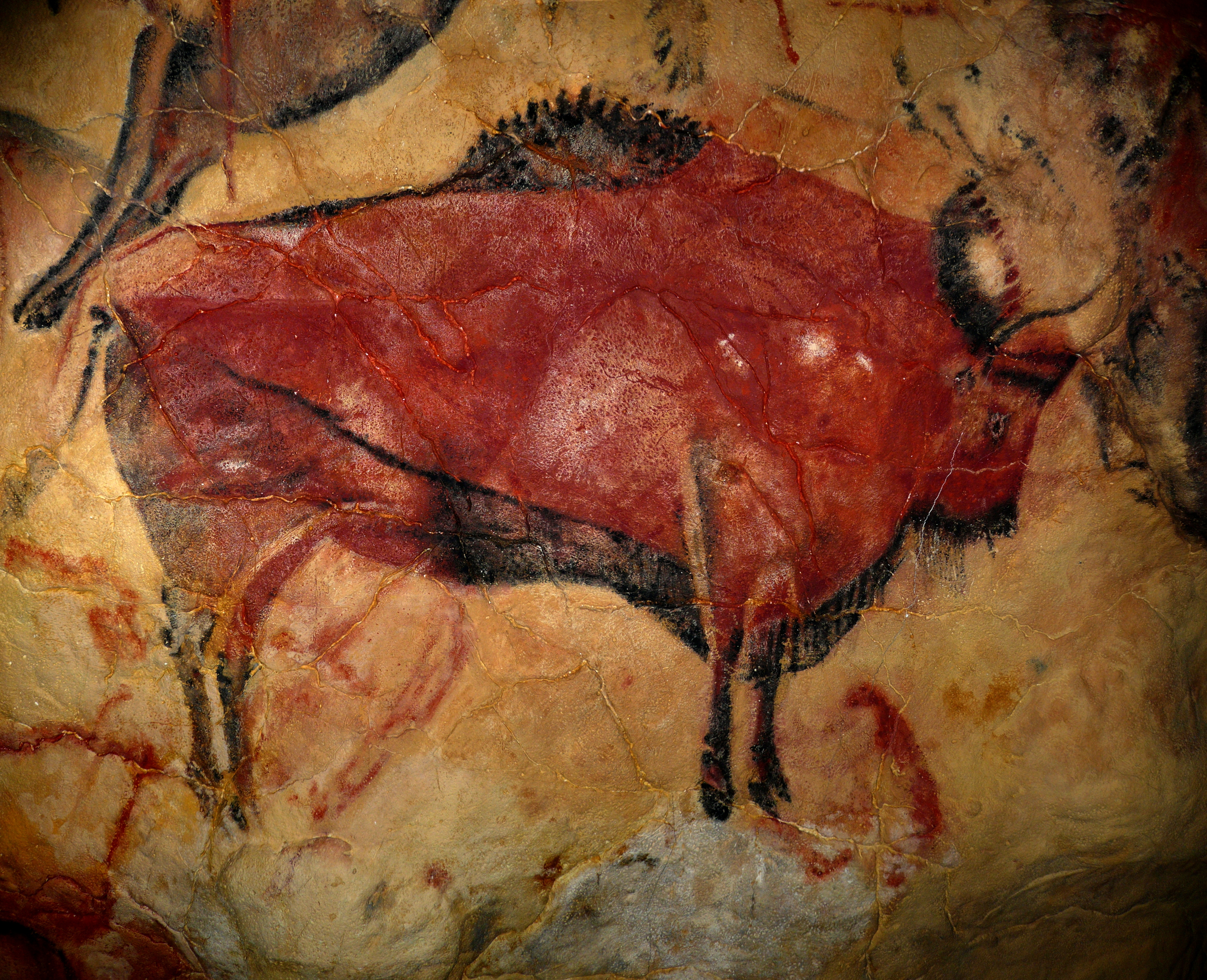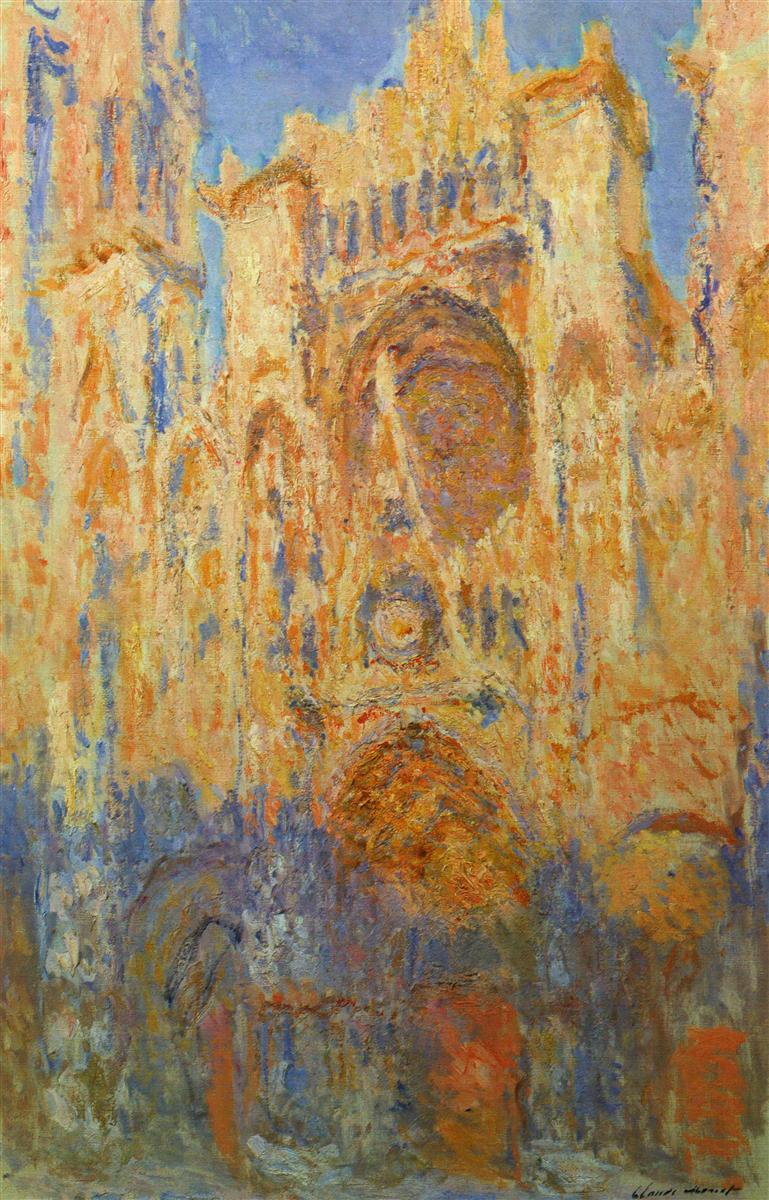
You know how sometimes a shift in vantage point or unusual lighting conditions can make a familiar object seem strange and unrecognisable? The same thing happens if one steps back and looks at the whole enterprise of painting with fresh eyes…
What is it that’s going on here?
Some people devote their lives to smearing surfaces with paint, and experience all kinds of extreme (and sometimes self-destructive) emotions in the process. These and some other people occasionally find it interesting to look at the results of this smearing process. And then there is a whole mildly absurd jungle of cultural, intellectual, religious, social, financial, legal (and illegal) systems growing around this strange activity. Why are we all doing this?
One way to address this conundrum is to try and discover how it all began…
This intriguing episode in the evolution of humankind (sometimes called “Creative Explosion”) occurred somewhere between fifty and thirty five millennia ago in Europe (at the time, the second wave of hominid arrivals from Africa — homo sapience — were sharing the continent with the Neanderthals). Cave paintings are perhaps the most well-known feature of this period of rapid innovation. For all we know, that is when and where the art of painting was invented. How did this happen, and why?
These are the questions David Lewis-Williams examines in his 2002 book, “The Mind in the Cave: Consciousness and the origins of art.” He writes:
“Art historians have given much attention to the ways in which graphic imagery is perceived as commensurate with mental imagery and objects in the world; scale, perspective, and the selection of distinguishing features are just some of the ideas that they discuss. Whilst these notions help to explain how people today interpret a pattern of lines on a surface as an image of something other than itself, they do not explain how people first came to believe that such marks could call to mind a bison, a horse or a woolly mammoth – if indeed they did.”

And there is something else, equally remarkable, in these paintings. A lot of new things appeared at the time — like, for example, new techniques for fashioning stone tools — but none of these inventions really stood the test of time. None of them would strike a modern human as superior, or even remotely equal, to the technology we have now. Not so with paintings: they still impress us as powerfully (if not more so) than anything a modern artist can hope to create. Lewis-Williams quotes Pablo Picasso, about this famous image of bison in Altamira cave: “None of us could paint like that”.
A modern human tends to think of paintings as two-dimensional images of three-dimensional things of material world. The question is, then, how people first came across the idea that a two-dimensional image can represent a thing. This, Lewis-Williams argues, is a wrong question, because cave paintings were never intended as representations of material things. Instead, he argues, they originate from shamanistic experiences of the spiritual world; they are what pre-historic shamans saw in altered states of consciousness.
There are two major assumptions behind this hypothesis. The first is that people of the age of Creative Explosion had a “fully modern consciousness”. Although not everyone would agree with that, the crucial point for Lewis-Williams is that the experiences of “altered states”, which can be induced and studied in laboratory conditions now, are essentially the same as, or at least fundamentally similar to, what our pre-historic ancestors would have experienced. In other words, we can use our own “altered state” experiences to reconstruct theirs.
The second cornerstone of the hypothesis is that some sort of shamanistic cosmology is a universal feature of hunter-gatherer societies. According to Lewis-Williams, a shamanistic worldview inevitably arises when a modern consciousness coexists with the foraging way of life. This world view implies co-existence of (at least) two tiers of the world, material and spiritual, and a shaman is someone who can establish a communication with the spiritual world, and thereby solve some problems of the material world: heal diseases, influence weather, ensure successful hunting through agreements with “spirit animals”. This communication often involves “traveling” to the world of spirits and — and here is the core of the hypothesis — seeing them. All this happens in an altered state of consciousness, which can happen on its own or be induced in a variety of different ways, from sensory deprivation to hallucinogenic drugs.
The crux of Lewis-Williams’ argument is that the mental images seen in altered states are two-dimensional: they appear as projections on two-dimensional surfaces. Moreover, a person can experience “afterimages” — projections of these mental images on material surfaces — for some time after the peak of “altered state” is over. It is quite possible that these pre-historic altered states were induced by the sensory deprivation of these dark subterranean caves themselves (if you spend a long time in complete darkness and silence, you start seeing things and hearing voices). If so, then the mental images of shamanistic trips could be actually seen as projections on the walls and ceilings of the caves. Lewis-Williams writes:
“How, then, did people come to make representational images of animals and so forth out of projected mental imagery? I argue that at a given time, and for social reasons, the projected images of altered states were insufficient and people needed to ‘fix’ their visions. They reached out to their emotionally charged visions and tried to touch them, to hold them in place, perhaps on soft surfaces and with their fingers. They were not inventing images. They were merely touching what was already there.
The first two-dimensional images were thus not two-dimensional representations of three-dimensional things in the material world, as researchers have always assumed. Rather, they were ‘fixed’ mental images. <…> For the makers, the paintings and engravings were visions, not representations of visions…”
An intriguing development in this hypothesis is that the subterranean caves themselves were thought of as a gateway between the material world and the spiritual world: you would go to a dark cave, and there meet the spirits (or “animal helpers”) emerging out of its walls and ceiling. “Fixing” these visions (by painting or by carving) was then equivalent to creating an opening in the veil separating the material and the spiritual. And this is how the art of painting came to exist.
To appreciate all the richness and subtleties of this hypothesis, you will need to read the book (which is a very good read!). To me, the hypothesis sounds very compelling, but there is an intriguing, and somewhat disturbing, quality to it. This quality has to do with a clash of belief systems, but I will try to put it in words as neutrally and “agnostically” as possible.
At the core of the hypothesis is a spectrum of human consciousness. Our perceptions change depending on the subjective state of consciousness, and we are all faced with the question of how these different experiences relate to “objective reality”. In other words, our knowledge of the world and our belief systems help us “make sense” of our experiences, assign meanings to them.
The art of painting originated, according to Lewis-Williams, from taking the whole range of subjective experiences seriously, as reflections of some aspect of objective reality. His own point of view, however, is that only one region in the spectrum of consciousness, the ordinary alert (waking) state, is valid. Only in this state do we perceive objective reality, the material world of three-dimensional things. All other experiences are, essentially, unfortunate tricks of the human neural system, an accidental and confusing corollary to its adaptive biological features (like our ability to sleep, to remember the past, and to imagine the future). In other words, what we see in alert states is “objective”, it’s really out there, but what we see in altered states is “just in the mind”. It’s not real, and the only rational thing to do is not to assign any meanings whatsoever to our dreams and similar experiences.
The problem, however, is that what we see in alert states is also a creation of the same neural system, and the relation between our subjective experiences and anything objective “out there” is problematic at best. Philosophers have struggled with this conundrum for centuries, well before the modern science brought this problem into the focus of popular awareness.
In particular, the perceived three-dimensionality of things in the material world is produced by the brain — in a very tangible, very materialistic, sense. Indeed, all the images we “get” through our eyes are two-dimensional, because they are projections of whatever is out there onto our very two-dimensional retinas. It’s from a series of such images that our brains construct three-dimensionality and present it to us as an objective quality of things. For all we know, these things can have forty two dimensions (or none at all). Two-dimensionality comes from our retinas, and three-dimensionality, from subconscious workings of our brains.
In sum, all our perceptions of objective reality (if there is one) are filtered through, and constrained by, our neural system and, even more so, our consciousness. This filter is extremely limiting as it is, and assigning the status of “objective reality” to one part of the picture we get limits our access to reality even further. I don’t know whether there is a “right” way to interpret the rest, but completely disregarding it as “neural junk” doesn’t look like a particularly wise choice to make; on the contrary, it feels like close-mindedness par excellence.
If we choose to accept this view, the whole enterprise of art is indeed an absurd exercise in futility, a millennia-long attempt to find meaning where there is none. And, indeed, there would have been no art at all if our pre-historic ancestors shared this view.

Another question that bothers me is whether the difference between the “pre-historic” and modern artists, implied throughout the book, is really real… When Michelangelo painted the moment of Adam being bestowed with spirit, wasn’t this his vision, too? I don’t think he has ever seen this scene anywhere but in his mind’s eye. And even Claude Monet, a quintessential painter from life, a recorder of direct visual experiences — wasn’t he really painting his mental images, inner visions that were accessible to him alone before they were “fixed” on his canvases? After all, nobody had seen Rouen Cathedral quite like that before…
Is the art of painting, then, just a residual form of ancient shamanism?
[…] it is simply not true that Art cannot exist without luxury — Rousseau couldn’t know about cave paintings, but we do. The needs of the mind had given rise to arts long before there was any luxury to speak […]